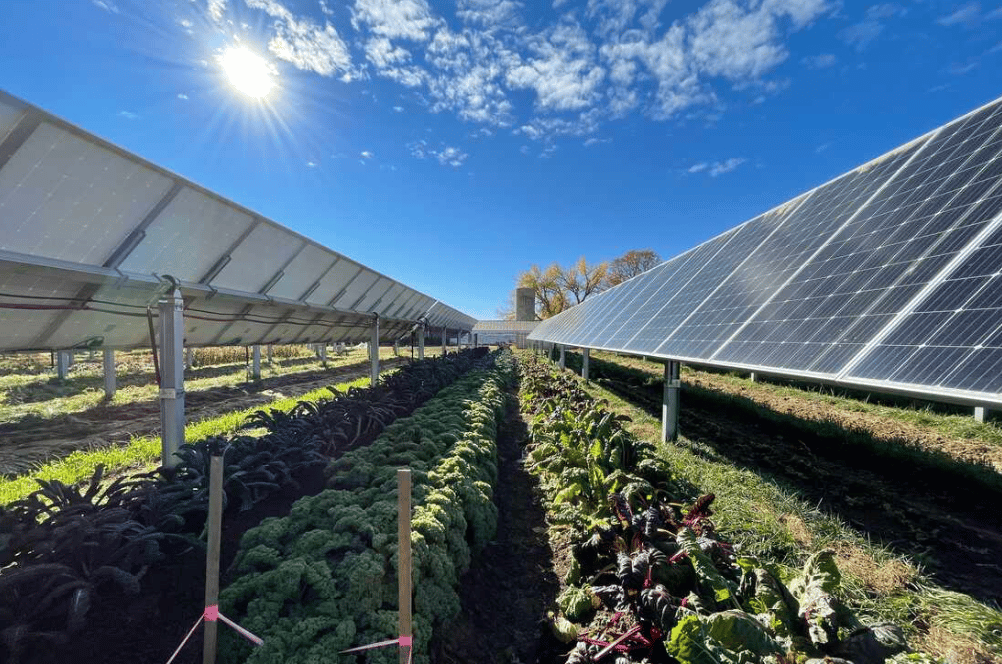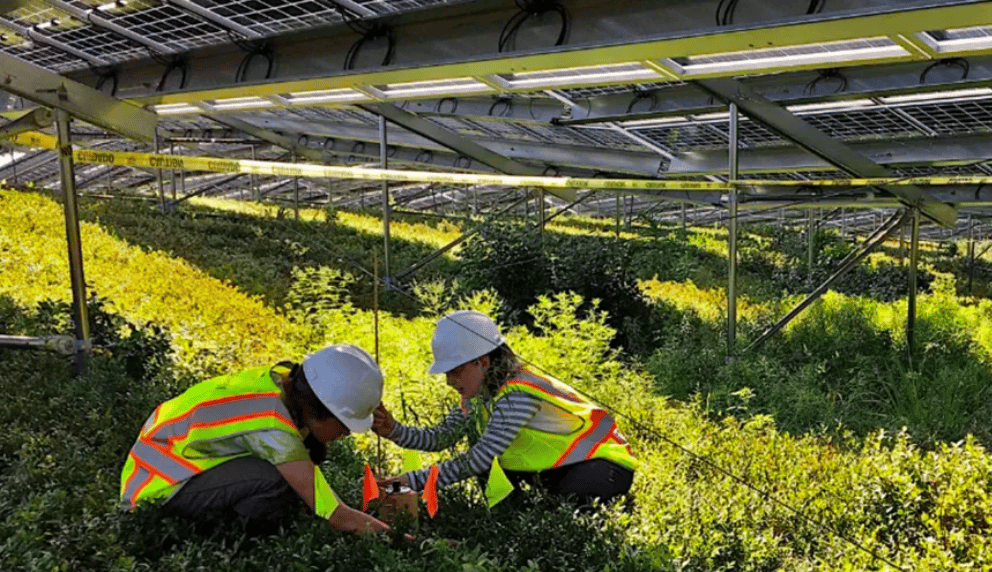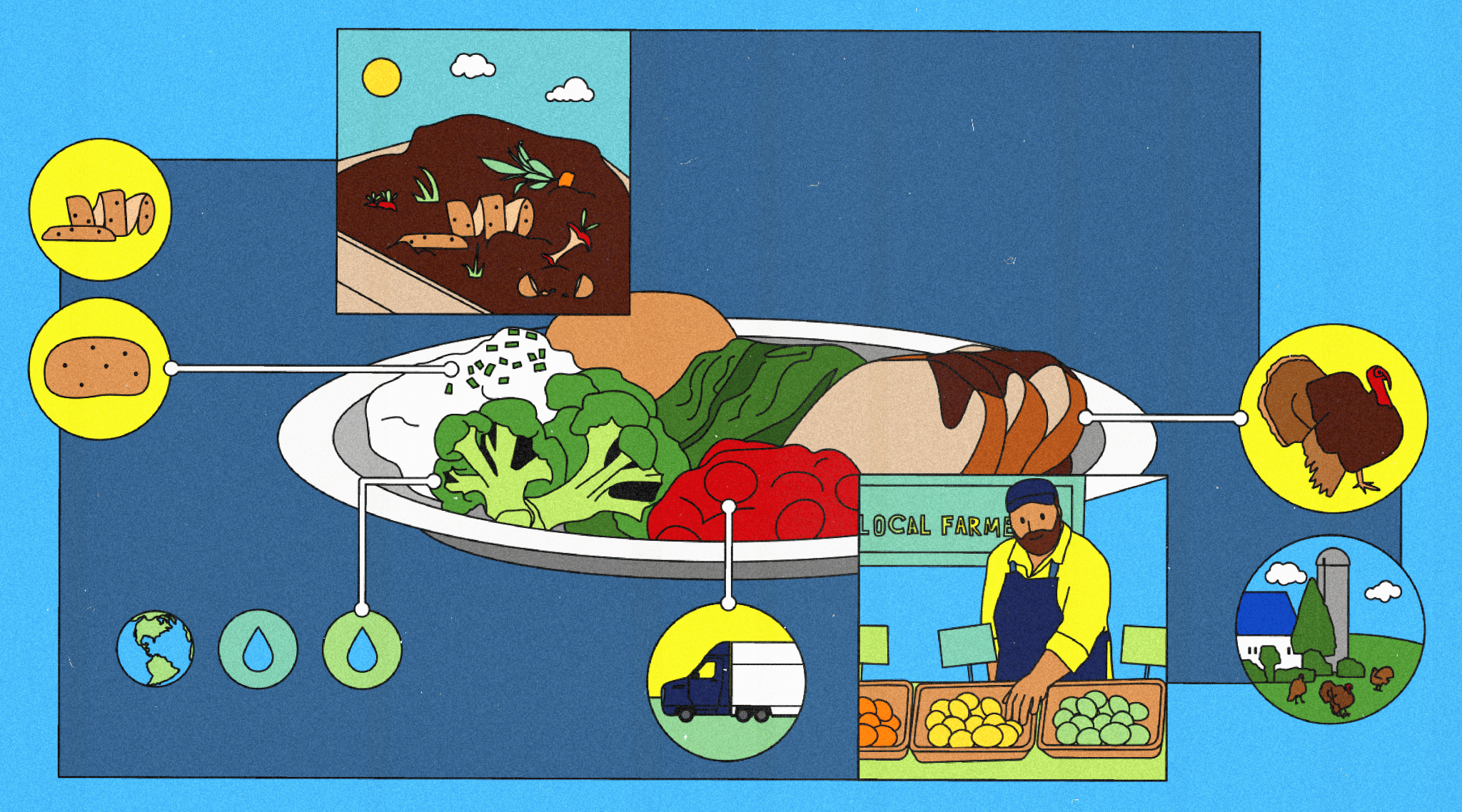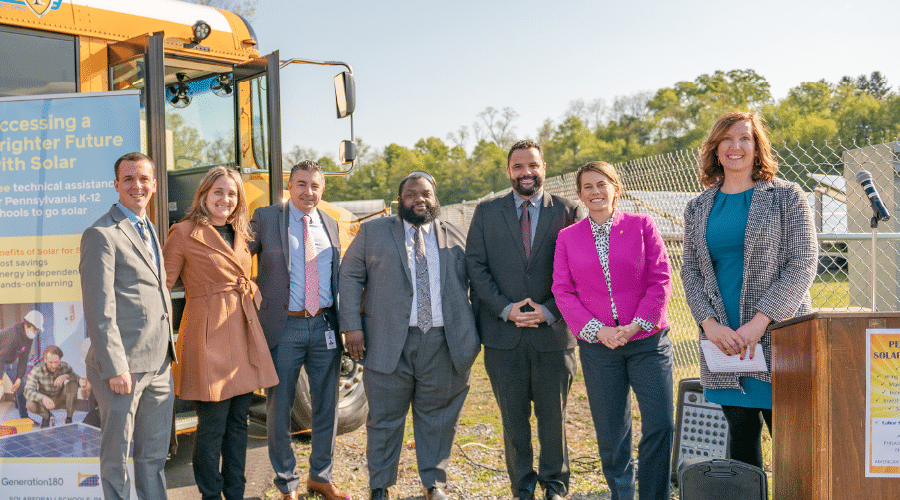If the thought of pouring rich gravy over your turkey and mashed potatoes at Thanksgiving has you salivating, you’re not alone. The two go together perfectly.
But you know what’s even better? When those potatoes are grown using dual-use agrivoltaics, a new idea that’s gaining momentum across the country.
It may sound complicated, but dual-use agrivoltaics is a simple concept. By placing solar panels over their fields, farmers can generate clean energy and grow food on the same plot of land – in football terms, you might even call it a “double-header” or “two-fer”. Depending on the crop, seeds are planted underneath or in between rows of panels and create a win-win situation by keeping farmland in production while generating renewable energy.
This is a climate solution we’re ready to get behind. While schools, malls, and other large parking structures are obvious choices for distributed solar—farmers are now getting in on the action with their wide swaths of open fields.

Farmers across the country are finding that many crops benefit from the shade and moisture that solar panels provide, and also like the extra income each month from the electricity generation. Just like mashed potatoes and gravy are good on their own, but mouth watering when combined, solar and agriculture are just better together.
Here’s why it’s so important that we expand this technology.
Solar is essential for a fossil fuel-free future
Just about any scenario in which humanity breaks ties with fossil fuels involves solar playing a starring role. A recent study from the Net Zero America project, initiated by Princeton University, highlights this point; for America to be powered entirely sans-carbon in 2050, solar production will have to ramp up more than 20x today’s current load.
The science is clear that we need a lot more solar. But, where are we going to put all these panels, and will they come at the expense of food production? Which communities stand to benefit from this energy revolution, and which will get the short end of the stick?
When done right, all parties—farmers, solar companies, and local communities—can reap the rewards. Research shows that when leveraging agrivoltaics, “solar panels provide shade for plants to grow more efficiently with less water, [while] the cooler and wetter microclimate created by the plants helps the solar panels cool down and operate more efficiently.” Sounds pretty symbiotic.

Not all crops thrive underneath panels. A project in Massachusetts had better results with cranberries than blueberries, conversely peppers in Arizona have done especially well. It seems that leafy greens, potatoes, and carrots are some of the best-suited crops for agrivoltaics, since the shade helps them thrive.
“It’s not so much about green energy at all, but economics”
That’s what Kerri Johannsen, energy program director with the Iowa Environmental Council, had to say about the decision for farmers to adopt solar installations on their land.
That doesn’t mean Iowans don’t care about the environment. At the end of the day, a farm needs to generate profits in order to continue operating.
Wild swings in energy and input prices, a pandemic shock, and trade tensions with China have slashed farm incomes. Farms are arguably the backbone of countless communities across the nation. Small operations make up half of America’s farmland and nearly 90% of farms overall. Bankruptcies are on the rise, and the future of farming is on track to be dominated by a few gigantic companies.
We can help reverse this trend by encouraging more farmers to take a look at solar, and increase the ways their land can work for them, and the planet.
The additional income can be the difference between selling a farm that’s been in the family for multiple generations, or setting your kids up for a secure future in the clean energy economy. In Pennsylvania and Oklahoma, income from clean energy on farms represents 6% of gross income. This energy income tends to be much more stable month-to-month than certain crops, which can be affected by poor weather and global production levels.
Farmers can have their cake (or pie) and eat it, too. Adding solar panels that cover certain crops can increase yields, provide a sorely-needed income source for their families, and generate clean energy. What’s not to like?

So, as you’re savoring your turkey and mashed potatoes this Thanksgiving, remember that clean energy and food production can pair together just as well.
















